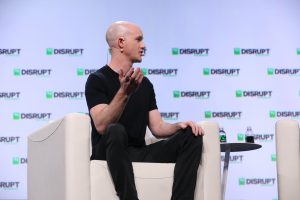The idea that PCs are dying never held much weight; if anything, despite inroads by the iPad Pro, they’ve solidified their position as the device you turn to when you need to get things done. But where do they go from here? And with Moore’s Law in the rearview how will they continue to improve?
At this year’s CES, Intel is laying out a vision for what PCs might look like, and how they’ll act, going forward. At a glance, it sounds not unlike the future, and present, of smartphones: folding screens, artificial intelligence, and a dollop of Chrome.
The most immediate of those is AI, because it’s already here; Intel’s latest generation of Core processors, called Ice Lake, have begun shipping in PCs with AI-friendly features on board. Primary among these is Intel Deep Learning Boost, which accelerates on-device inference, the process by which algorithms interpret new data based on their training. As detailed at the company’s CES keynote, Intel’s upcoming Tiger Lake chips have the sort of performance gains you would expect—a “double digit” performance boost, Thunderbolt 4 integration, a new graphics architecture—but also a healthy improvement in how it handles AI tasks.
Artificial intelligence “is now equivalent and on par with all of the critical aspects of the platform,” says Gregory Bryant, Intel’s general manager of client computing. “It’s a first-class citizen in terms of driving our road map and our innovation, research and development, engineering, our partnership with developers.”
Given how enthusiastically AI gets thrown around, accurately or not, it’s important to have some context as to what all that emphasis will actually accomplish. That’s especially so in the case of AI capabilities at the chip level. After all, you interact with neural networks all the time on your PC already; it’s just that most of that work takes place in the cloud. Bringing it to the device offers all sorts of tangible benefits, even if not entirely transformative ones.
“If you’re going from your device to the cloud and back again, even at the speed of light, in some usages it introduces this lag that is very annoying,” says Roger Chandler, vice president of Intel Architecture, Graphics, and Software. Chandler notes also that running AI on the device means it’s both always available—no network disconnects to slow you down—and more private, since you don’t have to jettison your data to some far-flung server to get things done.
Take Adobe, which showed off its Ice Lake AI implementation onstage Monday. The capabilities have seeped across its software suite for creative tasks, speeding up everything from intelligent object selection to color matching to reframing a video. “We can use accelerated inference and machine learning, these algorithms, to do things that used to take minutes or longer in seconds,” says Gregory Bryant, Intel’s general manager of client computing. “The software can now make these usages possible automatically.”
Adobe makes for an obvious partner here; the company has invested in AI integrations for several years through its Sensei framework. But it’s far from the only one. Chandler points to clinical lab company Quest Diagnostics, which he says has seen a 33X improvement in identifying lung nodules in CAD models, and photo software company Topaz Labs, which uses AI to upscale photo resolution by automatically filling in pixels. He’s optimistic that most of the software industry will soon follow suit.
“Over the next couple of years, I would not be surprised if 80 percent of software workloads, in some way or another, have some sort of AI acceleration built into them,” he says. “Some of them may have it as a core, foundational element of what an application does. Some of it might be small features. But when we talk to developers, pretty much all of them are doing something right now to leverage the ability of AI to improve their workload in some way.”
Which is perhaps unsurprising, given that this sort of on-device AI has already become relatively commonplace on smartphones. Apple introduced its Core ML framework in 2017, letting apps run neural networks on the iPhone and iPad. And Google emphasized its efforts to run Google Assistant locally on Android devices at Google I/O this year.
“There is no question that the ability to process data at the edge and not only in the cloud will play a big role in our future,” says Carolina Milanesi, an analyst at Creative Strategies.(It also has machine-learning chips of its own design.) No reason to leave PCs behind.
That applies to form factors as well. Just as smartphone makers are now tinkering with foldable displays—with limited success, although Microsoft’s take looks promising—PC stalwarts like Lenovo and Asus have brought to CES hardware with both dual and bending screens. Both appear to have learned the most important lesson from previous failed attempts at dual-display computers, which have sporadically surfaced for at least a decade: Make sure you still give people a physical keyboard to type on.
Intel itself introduced a reference device that it calls Horseshoe Bend. Intended as a sort of North Star for manufacturers, the concept takes up as much space as a 12-inch laptop, with a touchscreen that opens up to 17 inches. It’s not something you’ll ever see on a Best Buy shelf, but as much as anything else it indicates how unsettled the PC future is.
“It’s too early to call, I think, exactly what types of sizes and formats are going to be successful,” says Intel’s Bryant. “But I’m convinced that these kind of dual-screen, foldable, more converged, mobile, more immersive-type devices are a segment that is emerging and that we need to address.”
And then there are existing form factors that could use a boost; in this case, that means Intel-powered Chromebooks. Samsung and Asus both announced models at CES that fall under Intel’s Project Athena designation, which means they tick off user-friendly boxes like all-day battery life and instant-on boot-ups. Twenty-five PC designs have gotten a Project Athena stamp of approval since Intel announced the initiative last year. Bringing Chromebooks into the fold helps ensure that both platforms get the same attention.
The changes coming to PC performance are mostly subtle: battery eking out a little more life, tasks running a little more quickly. The changes to form may be more dramatic, depending on whether foldables get momentum. But they all at least seem inherently useful, which is more than you can say for a lot of the promises made this time of year.
More From CES 2020
- Liveblog Day 1: Get the latest from Las Vegas
- Gallery: The 10 neatest things we’ve seen so far
- Lenovo flaunts its foldable PC, the ThinkPad X1 Fold
- Facebook revamps its privacy checkup feature just in time
- Podcast: Sex toys, AI toothbrushes, and more in the forecast
- Looking for more? Check out our full coverage here
- 📩 Sign up for the Gadget Lab newsletter for news and reviews you can use.



